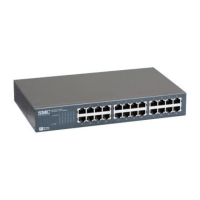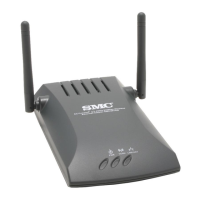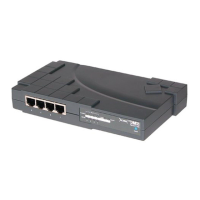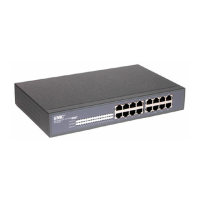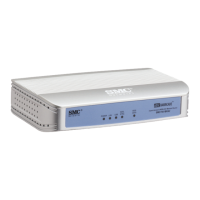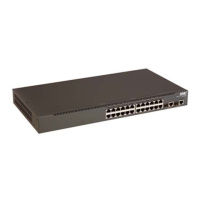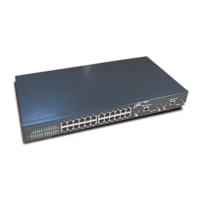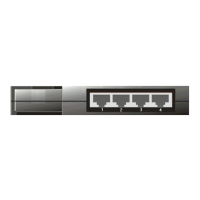C
HAPTER
4
| Configuring the Switch
Configuring Port Mirroring
– 191 –
◆ Status - Enables or disables storm control. (Default: Disabled)
◆ Rate (pps) - The threshold above which packets are dropped. This limit
can be set by specifying a value of 2
n
packets per second (pps), or by
selecting one of the options in Kpps (i.e., marked with the suffix “K”).
(Options: 2
n
pps where n = 1, 2, 4, 8, 16, 32, 64, 128, 256, 512; or 1,
2, 4, 8, 16, 32, 64, 128, 256, 512, 1024 Kpps; Default: 2 pps)
Due to an ASIC limitation, the enforced rate limits are slightly less than
the listed options. For example: 1 Kpps translates into an enforced
threshold of 1002.1 pps.
WEB INTERFACE
To configure Storm Control:
1. Click Configuration, QoS, Storm Control.
2. Enable storm control for unknown unicast, broadcast, or multicast
traffic by marking the Status box next to the required frame type.
3. Select the control rate as a function of 2
n
pps (i.e., a value with no
suffix for the unit of measure) or a rate in Kpps (i.e., a value marked
with the suffix “K”).
4. Click Save.
Figure 81: Storm Control Configuration
CONFIGURING PORT MIRRORING
Use the Mirror Configuration page to mirror
traffic from any source port to a target port for
real-time analysis. You can then attach a logic
analyzer or RMON probe to the target port and
study the traffic crossing the source port in a
completely unobtrusive manner.
PATH
Configuration, Mirroring
COMMAND USAGE
General port mirroring configured on the Mirror Configuration page and
ACL-based port mirroring are implemented independently. When port
Source
port(s)
Single
target
port
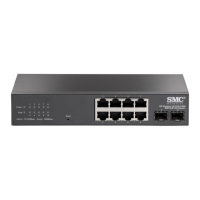
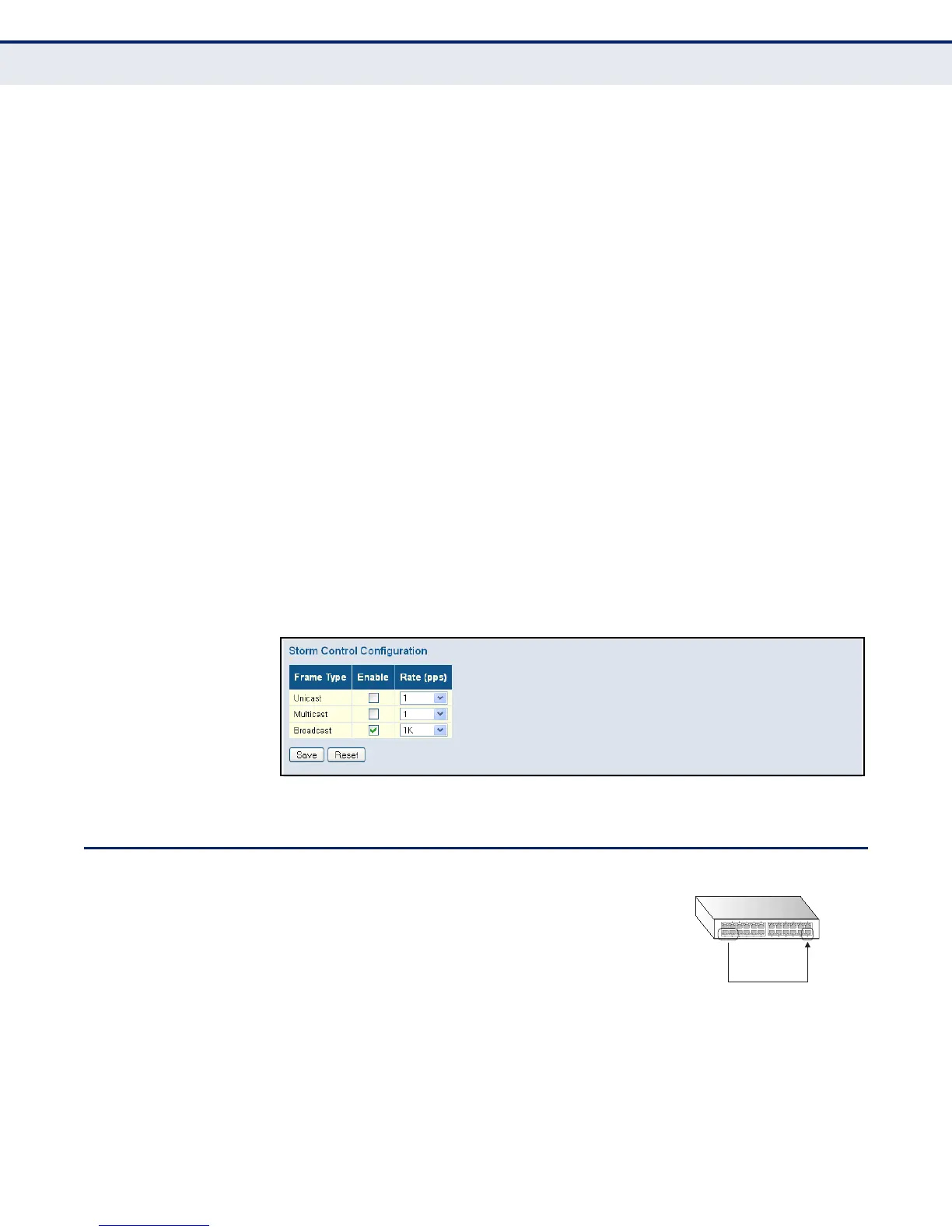